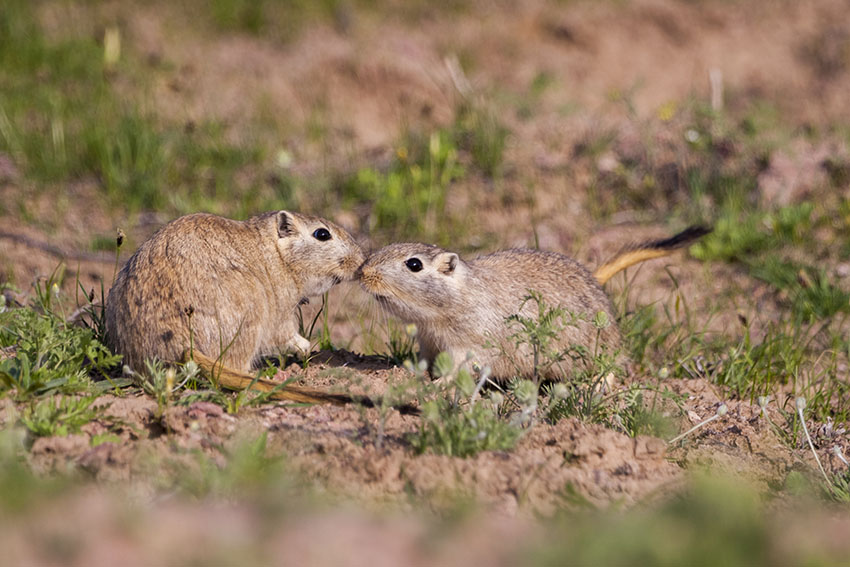Many of the hundred-plus gerbil species survive in quite arid conditions in the wild. Domesticated species would be unable to survive this kind of food irregularity and heat, but their wild ancestors and counterparts have a number of behavioural and anatomical adaptations that enable them to scrape by on the few resources available to them.

Over time, gerbils have adapted to become great little desert survivors!
- Although a number of colour variations have arisen, wild gerbils are pale brown. This form of colouration gives them camouflage in their environment, making them less likely to be detected by predators.
- In order to minimise the levels of fluid that they lose, over time gerbils have evolved to only urinate relatively infrequently compared to some other, non-desert dwelling rodents.
- Gerbils are excellent burrowers - they do it so much that even captive gerbils need to burrow in order to fill this deep evolutionary need. Living in a burrow enables gerbils to escape the intense heat of the day. The sand insulates their little nest, keeping it safe from the burning heat and helping it protect against the chill of a cloudless desert night.
Comments
There are no comments just yet